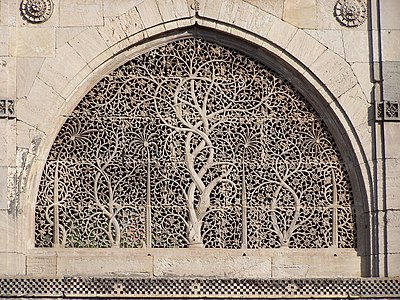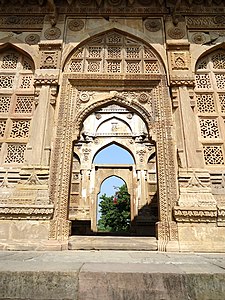A jali or jaali, (jālī, meaning "net") is the term for a perforated stone or latticed screen, usually with an ornamental pattern constructed through the use of calligraphy and geometry. This form of architectural decoration is common in Indo-Islamic architecture and more generally in Islamic architecture.[1]

The jali helps in lowering the temperature by compressing the air through the holes. Also when the air passes through these openings, its velocity increases giving profound diffusion.[clarification needed] It has been observed that humid areas like Kerala and Konkan have larger holes with overall lower opacity than compared with the dry climate regions of Gujarat and Rajasthan.[2]
With compactness of the residential areas in the modern India, jalis became less frequent for privacy and security matters.[3]
History
Early jali work was built by carving into stone, generally in geometric patterns, while later the Mughals used very finely carved plant-based designs, as at the Taj Mahal. They also often added pietra dura inlay to the surrounds, using marble and semi-precious stones.[1][4]
See also
- Girih
- Jharokha
- Openwork
- Venturi effect
Illustrations









| This article uses material from the Wikipedia article Metasyntactic variable, which is released under the Creative Commons Attribution-ShareAlike 3.0 Unported License. |